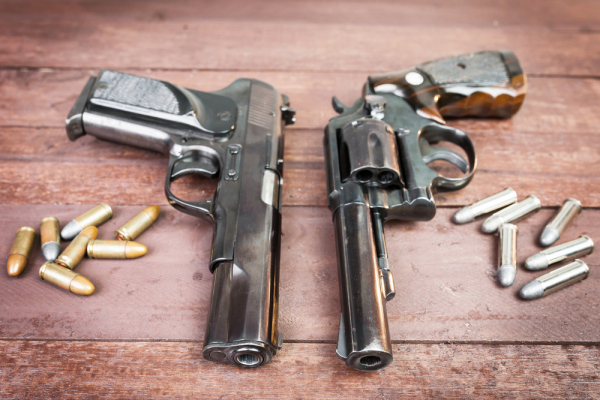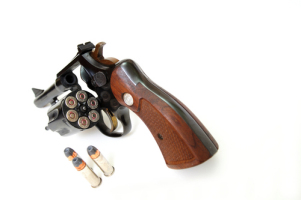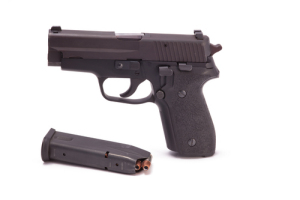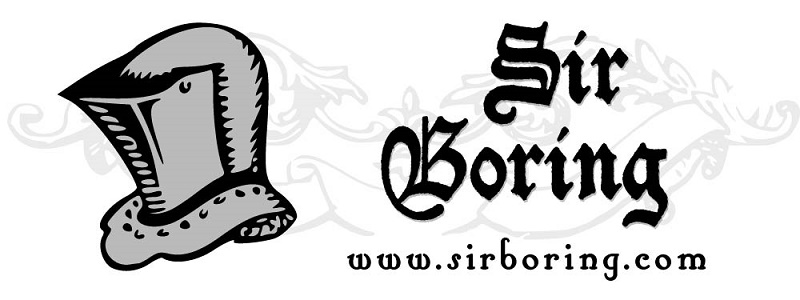
Origins
Modern handguns can trace their origins to hand cannons developed in 13th century China. These were simple but effective devices utilizing a barrel which was loaded from the muzzle, with a propellent charge and projectile. The charge would then be ignited by an external source, typically a spark or open flame, through a small hole at the rear of the barrel. These early weapons were not the most accurate or lethal but would usher in a new age of weapon technology.
Initial Developments
This handgun concept would be further refined in Europe over the coming centuries, with the advent of matchlock, wheellock, and flintlock muzzleloaders, but the core configuration remained the same. Only with the advent of the percussion cap, in the early 19th century, were handguns able to become more reliable multi-shot weapons. Using the percussion cap as a consistent and simple ignition source for a black powder revolver, with its multiple revolving chambers, finally allowed for a loaded cylinder to be brought into line with the barrel and fired repeatedly. These weapons would need to be manually cocked before the trigger could be pulled to set off the round (single action). These developments also enabled a handgun to be comfortably worn on one’s person, typically in a leather holster off the side of the hip.
Advancements
The next great leap would occur with the development of the self-contained metallic cartridge in the mid-19th century, followed by the formulation of smokeless powder in 1884. The self-contained metallic cartridge removed the cumbersome steps of loading a powder charge and projectile into a barrel or cylinder, followed by prepping the ignition source. Instead, the cartridge would hold the ignition source, propellent, and projectile all within one small unit. Smokeless powder produced higher pressures, burned cleaner, and could propel a projectile farther and faster. Around this same period, some revolver designs would begin to incorporate a reliable mechanism into the pull of the trigger, cocking and firing the weapon over the course of a single trigger pull (double action). These key developments would thrust small arms technology, and especially handguns, into another dimension.

Modern Revolvers
Although revolvers were first made using black powder and percussion cap technology, modern revolvers came into being with the incorporation of the self-contained cartridge. Revolvers were able to reliably and safely fire and reset a sequence of cartridges housed within a cylinder, before the weapon needed to be manually reloaded with new cartridges. This combination of technologies finally provided users with a level of firepower which enabled them to have multiple, reliable, and repeatable firepower conveniently on hand. This advancement in technology also made them a popular choice for the military and police (and criminals), as well as sport shooters.

Modern Pistols
While revolvers served their role as a sidearm well, the advent of auto pistols rewrote the playbook. Early models were designed and fielded in the late-19th century, but it would not be until the mid-20th century when pistols began to outgun revolvers. Pistols were no longer restricted by size, shape, and/or mechanisms associated with revolvers, and small arms technology could be applied in new and innovative ways.
Pistols usually incorporated a box magazine which housed the cartridges, instead of a cylinder, and used a reciprocating slide, instead of the turning of a cylinder, to manipulate the action. This type of weapon harnessed the forces from the fired cartridge to unlock the action, extracting the spent case, ejecting it during the rearward movement of the slide, then loading a new round from the magazine into the chamber, thus resetting the mechanism and readying it for fire. This simple automatic action increased the reliability and firepower of the handgun, making revolvers more and more obsolescent over time.
Current Considerations
The current state of handguns, and of all small arms, has stayed relatively the same for decades. Small arms technology is continually pushed to ever more finite refinements, even though the base technologies remain the same. Major militaries, organizations, and avid civilian shooters all over the world utilize various forms of modern handguns for day to day uses, while reenactors, museums, and collectors still create, collect, and utilize even the most primitive of handguns for educational and research purposes.
Pistols are mostly used for self-defense or duty uses, with “Glock” becoming synonymous for all auto pistols due to the brand’s massive market share and industry leading designs. Although relegated to secondary or specialized roles, handguns remain and will remain a very important and ever-present facet to modern society.
